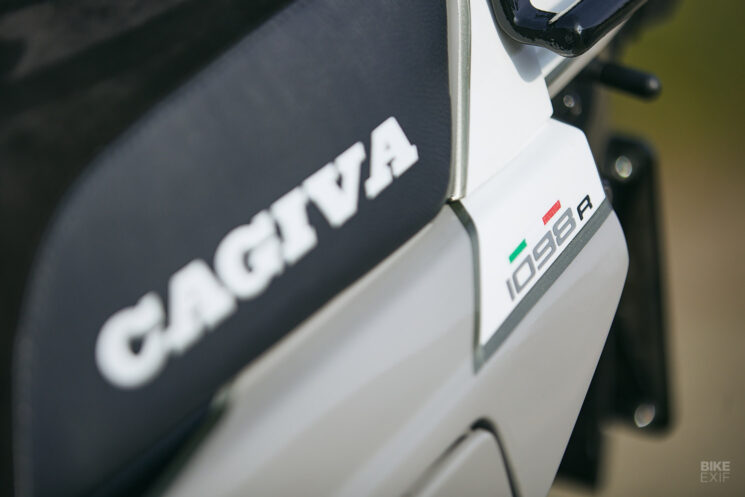
Remember the Cagiva Elefant? The legendary Dakar-winning dual-sport was built while Cagiva owned Ducati, and was powered by the latter’s widely used 904 cc Desmodromic L-twin engine. It epitomized the rally raid style of the 90s—especially with giant “Lucky Explorer” graphics splashed on the side.
The Ducati DesertX is probably the closest thing you can get to a modern interpretation of the Elefant. But thanks to a confusing jumble of red tape (MV Agusta owns the Elefant name), Ducati couldn’t call it that. Luckily Paolo Balbo isn’t bound by such corporate trappings; he’s called his latest creation an Elefant, even though it isn’t technically one.
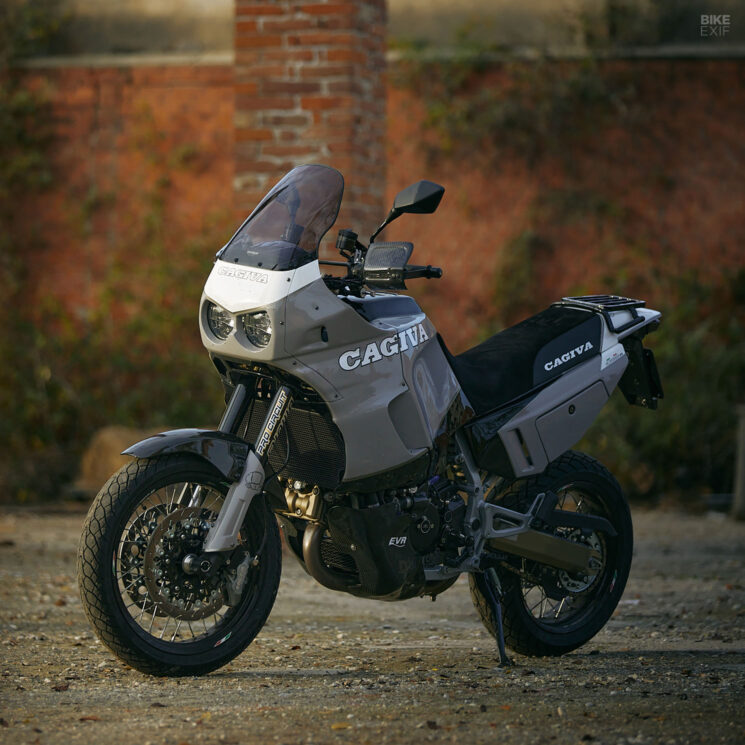
Based in Parma, in Italy’s stunning Emilia-Romagna region, Paolo customizes bikes as a hobby. At a glance, his Elefant looks like a tidy restomod. But get close to it, or twist the throttle, and you’ll soon realize it’s a different animal entirely.
That’s because Paolo didn’t just want to own an Elefant—he wanted to own the fastest Elefant in the world. So instead of finding a single donor bike, he sourced a frame and engine, then cherry picked the best parts to combine them with.
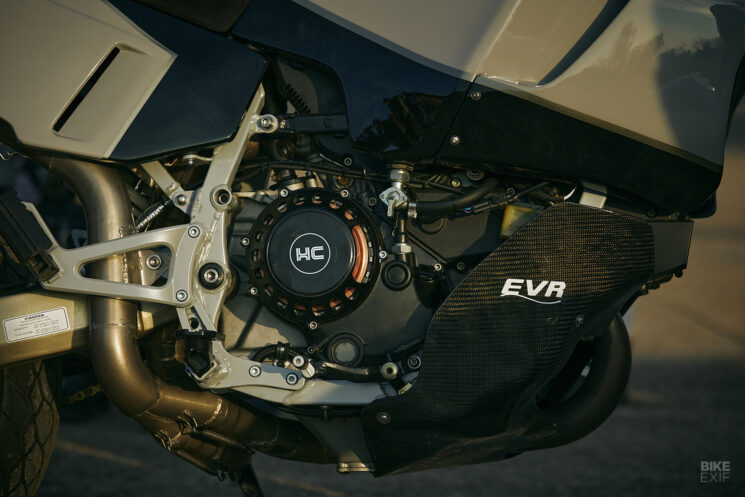
The frame is actually from the Elefant’s successor—the 1998 Cagiva Gran Canyon 900. But the motor is even more modern. Using a series of laser-cut engine mounting plates, Paolo managed to wedge in the 1,099 cc Desmo V-twin from a 2007-model Ducati 1098.
The 1098 also donated its electrical system. It’s been upgraded with an EVR electronic gearbox control unit, and now runs with two different engine mappings—one full power map, and one for rainy conditions. So not only is Paolo’s Elefant good for 160 hp, but it behaves like a modern motorcycle too.
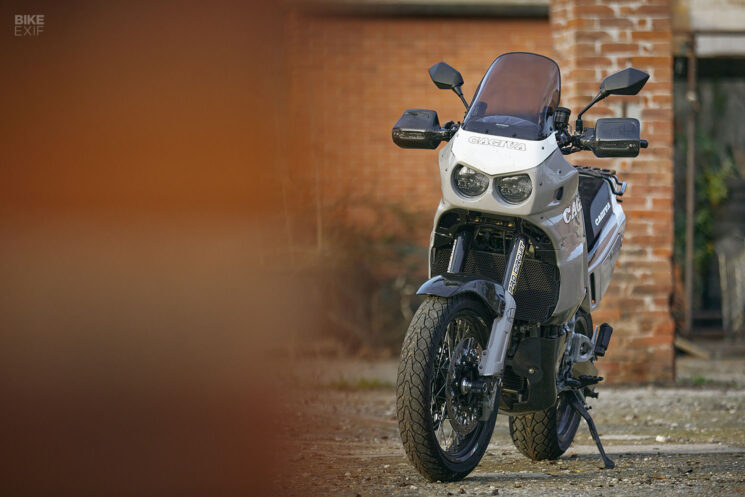
With that much power on tap, Paolo knew he had to spec the running gear to match. A set of burly Showa upside-down forks went onto the front end, with modified internals to optimize performance. They’re held in place by bespoke yokes—machined by Style & Performance to Paolo’s specifications.
The front wheel uses the 19” rim from a KTM 1090 Adventure, laced to an original Cagiva Elefant hub. Custom mounts hold a pair of Brembo calipers from a Ducati 999, gripping 320 mm discs.

There’s more trickery going on at the back, where Paolo managed to adapt the swingarm from a Honda Hornet to fit his Elefant. It’s hooked up to a modified WP Suspension shock, lifted from a KTM 990 SuperDuke.
The rear hub’s another OEM Elefant part, the 17” rear rim is from an Aprilia SVX550, and the rear Brembo brake’s a Ducati 1098 item.
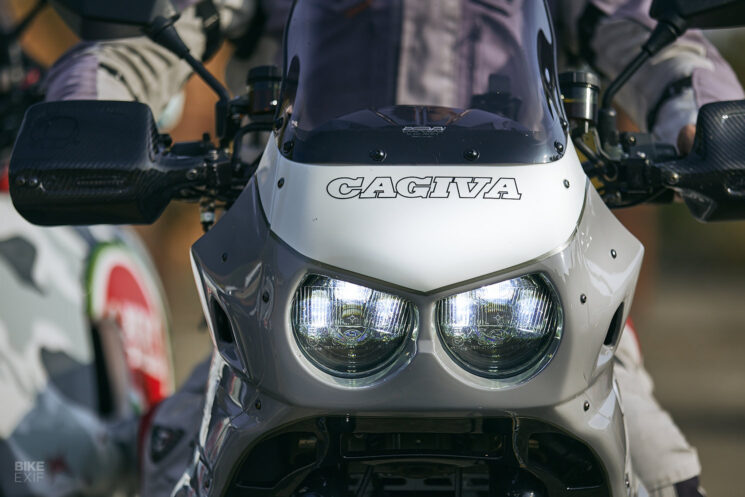
The Cagiva’s bodywork is an inspired cocktail of refurbished and handmade parts. The tank and rear side panels are original Elefant pieces, but the front fairing was built from scratch, using a mix of fiberglass, carbon fiber and kevlar. Ditto for the front and rear fenders, sump guard and hand guards.
Behind the fairing, a set of enduro handlebars are matched to the 1098’s grips, switches, levers and dashboard.
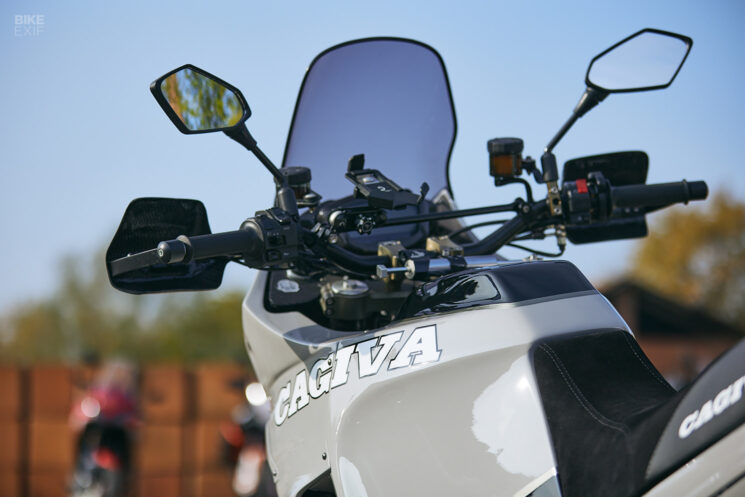
Subtler touches include a custom-made luggage rack, an open clutch cover, and an Akrapovič muffler. Under the hood, you’ll even find a custom-made carbon and kevlar airbox.
The color scheme is a simple grey and white affair, with a classy two-tone cover on the seat. With period-correct Cagiva logos, and an OEM-style rear light and license plate bracket, you’d be forgiven for mistaking this for a restored classic. Until it comes screaming past you, of course.
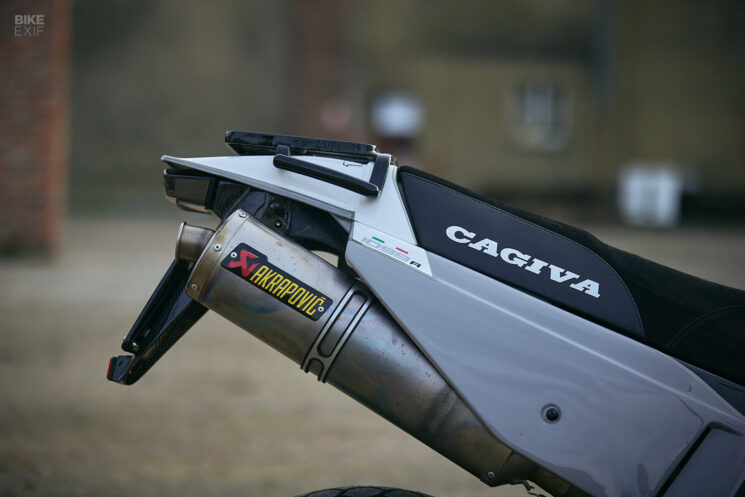
If it were up to us, we’d have finished this off with those iconic “Lucky Explorer” logos. That said, we don’t hate this look—and besides, Paolo’s other Elefant wears that livery.
Paolo Balbo | Images by PGK
